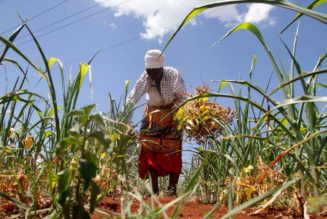Capital Markets
CBK reveals Sh109bn banks’ exposure to larger borrowers
Friday October 27 2023

The Central Bank of Kenya in Nairobi. Retail investors have loaned the Kenyan government an extra Sh174 billion this year as they flee from the stock market.
Half of commercial banks would require at least Sh109.4 billion in fresh capital if each of their top three borrowers were to default on loans, pointing to high risk in the sector.
Central Bank of Kenya (CBK) stress test carried out in May but findings made public in the recently released sector stability report, shows that under a severe scenario, such defaults per bank would see 19 lenders breach the minimum capital requirements by at least Sh109.4 billion.
Read: Banks strike high-profile borrowers in default panic
Projected impact is over the Sh63 billion that previous CBK stress test showed would be required by 21 banks to meet the least core capital adequacy ratio of 10.5 percent were its large borrowers to default on loans.
“Most banks are vulnerable up to three top borrowers defaulting per bank under severe scenario, highlighting concentration risk to a few clients,” says CBK.
“Banks therefore need to ensure top borrowers are performing and devise strategies to manage any default before it develops into a systemic problem.”
The baseline scenario points to a capital requirement of Sh26.2 billion while a moderate one would require Sh62.8 billion by 13 and 15 banks respectively if the top three borrowers in each bank default.
Lenders have been facing increased exposure especially from corporates, with several top banks putting several firms under administration or auctioning assets to recover their money as defaults mounts.
CBK says there is a general concentration risk in the banking sector as households, manufacturing, trade and real estate sectors account for the 59.3 percent of total credit to the private sector as of June 2023.
Read: How borrowers can survive higher interest rate cycles
“A major shock to any of these sectors, could have material impact on the regional banking sector,” says CBK. Non-performing loans have been the biggest headache for banks this year, with the ratio of defaulted loans in the total amount loaned out hitting 15 percent in September.









